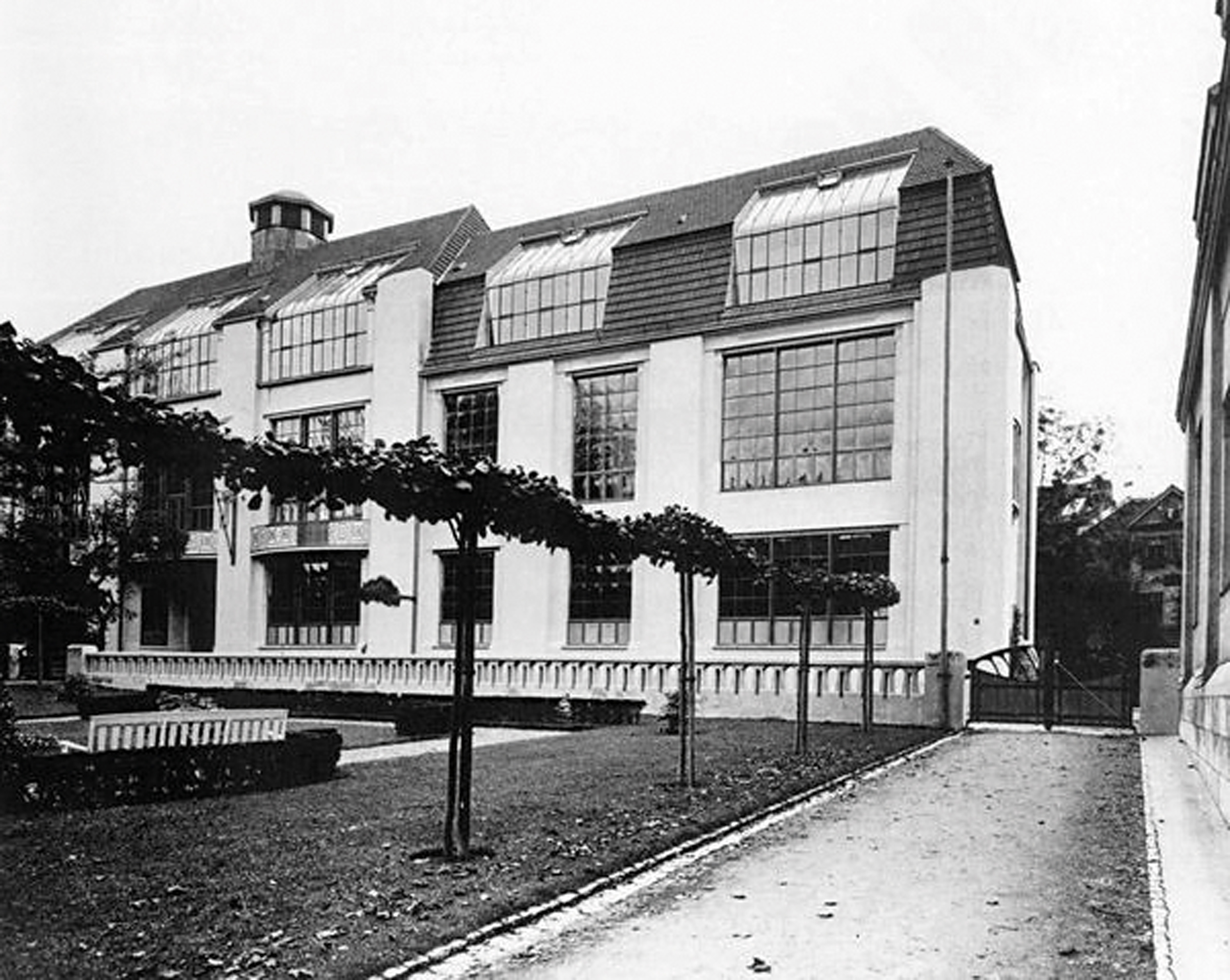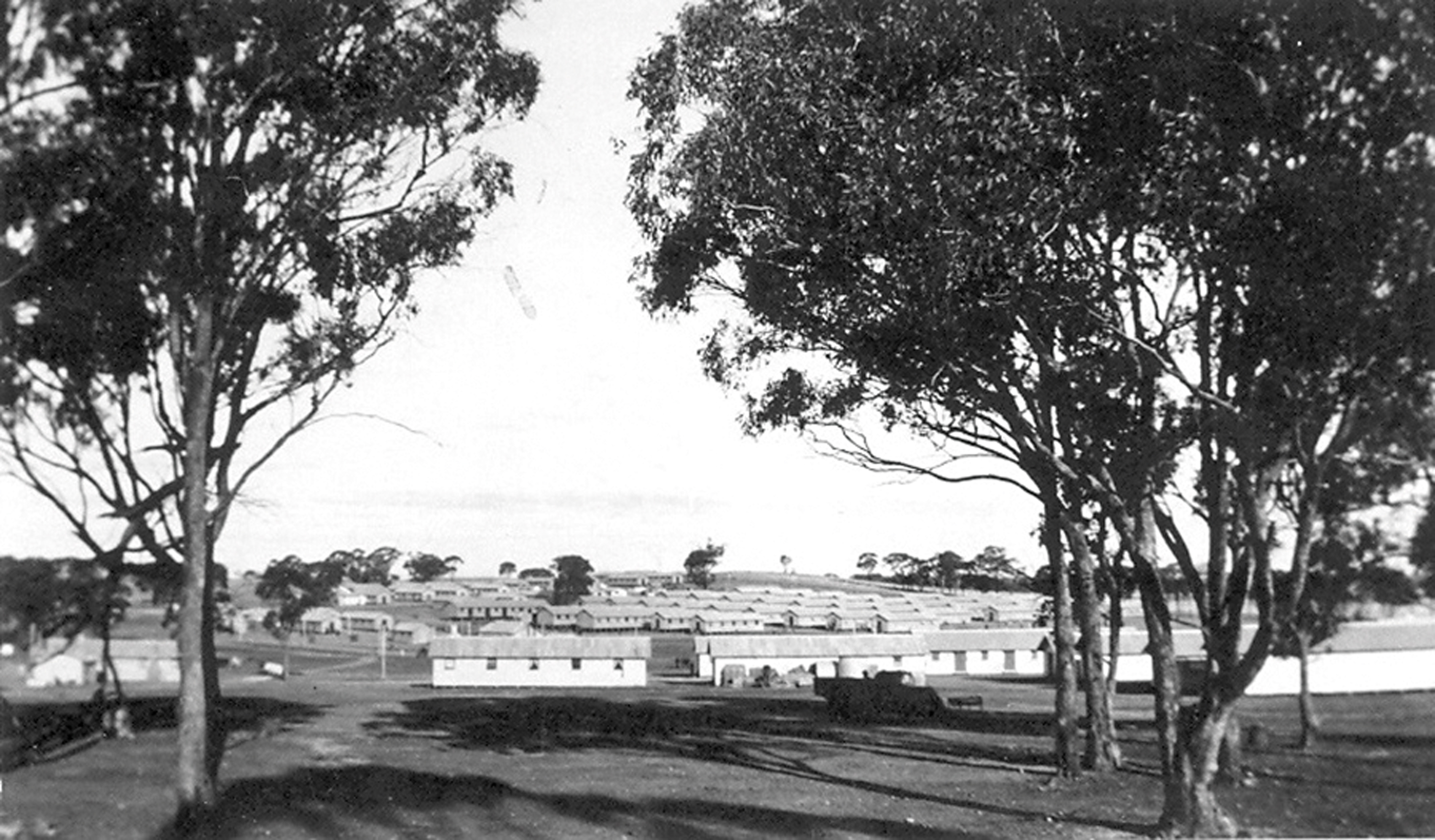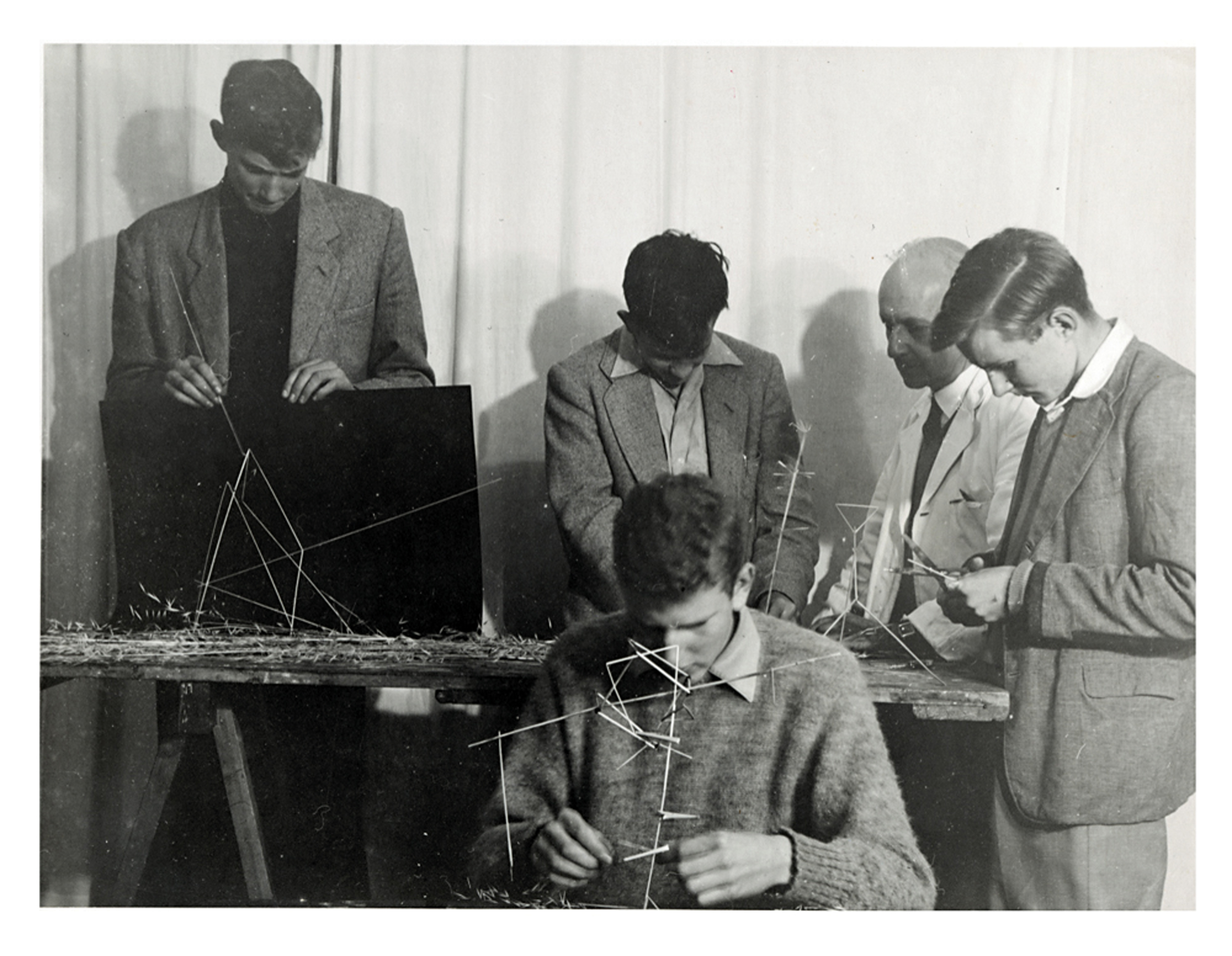A COLLECTION OF WORKS BY LUDWIG HIRSCHFELD-MACK
Bauhaus School of Art in Weimar

The arrival of Ludwig Hirschfeld-Mack in Australia in 1940 established a direct link between avant-garde European modernism and twentieth century Australian art. Interned in England, where he had sought refuge from the rise of Nazism in Germany, Hirschfeld-Mack was one of more than two and half thousand men transported to Australia on board the HMT Dunera. Many of the ship’s passengers were highly educated, skilled professionals who went on to make significant contributions to the cultural, economic and social life of their new country. In the creative fields of art and design alone, the ‘Dunera Boys’ included the photographer Henry Talbot, the sculptor Erwin Fabian, and Fred Lowen and Ernst Rodeck, founders of FLER furniture.
Hirschfeld-Mack was one of the most well-trained artists on the Dunera. His studies began in 1913 when, with the support of a monthly allowance from his father, he enrolled at the Debschitz School in Munich, while undertaking compulsory military training.1 Progressive in its approach, the school welcomed female students (including Hirschfeld-Mack’s sister, Emmy, who established a career in costume design) and staff, and encouraged the application of the visual and applied arts to everyday life.2 This approach aligned with the philosophy of the Bauhaus, where Hirschfeld-Mack continued his studies between 1919 – 25. Founded by architect Walter Gropius in Weimar in 1919, the Bauhaus counted among its teachers some of the most innovative and influential artists of the time, including Paul Klee, Josef Albers, Wassily Kandinsky and Oskar Schlemmer. Reflecting the idealism and desire for a better world which was shared by so many following the devastating experience of the First World War, the school’s manifesto proposed a radical challenge: ‘Let us create a new guild of craftsmen, without the class distinctions which raise an arrogant barrier between craftsman and artist. Together let us conceive and create the new building of the future, which can embrace architecture and sculpture and painting in one unity.’3
Painted in oil on canvas, Untitled (Seated female figure with long yellow hair), 1921 – 22 was made mid-way through Hirschfeld-Mack’s years at the Bauhaus. Sophisticated in its technical realisation and complex in composition, the painting reflects the work of a skilled artist who is absorbing and distilling a range of creative influences. Art historian, Peter Stasny, suggests that the artist’s wife, Elenor, may have provided the inspiration for this image which, although strikingly abstract, describes a female figure with long, blonde hair, seated and holding a book on her lap.4 Stasny also identifies the influence of Johannes Itten, one of the Bauhaus masters, in the rhythmic repetition of form that animates the surface design.5 Pattern is a distinctive element of the work, as is the focus on texture, from hard-edged, angular forms, to translucent veils of colour, which are beautifully expressed, highlighting Hirschfeld-Mack’s deft control of his brush and medium. Juxtaposed and layered, colour is also a critical element, not surprising for an artist who taught a seminar on colour theory at the Bauhaus in the winter of 1922 – 23 and was renowned for his experiments with colour and innovative Farbenlichtspiele (colour-light plays), which combined original musical scores with dynamic projections of coloured light.6
Recognising the danger and volatility of the political situation in Europe, Gropius had moved to the United States in 1937. Holding Hirschfeld-Mack in high esteem, he encouraged him to do the same, recommending him for a teaching position in Boston and when this fell through, promising to help him find employment. Indeed, they remained close throughout their lives, and Gropius and his wife, Ise, visited Geelong Grammar with Hirschfeld-Mack during their trip to Australia in 1954. In early 1940, Hirschfeld-Mack’s immigration to America seemed certain with the firm offer of a job at Black Mountain College, North Carolina, however plans were derailed once again, when he was interned following the fall of France in May 1940, as a result of the escalation of suspicion and distrust of Germans and Austrians living in England, even if, like Hirschfeld-Mack, they had Jewish heritage.7 The rest, as they say, is history.
1. For a detailed biographical account of Hirschfeld-Mack’s life, see Schwarzbauer, R. with Bell, C., Ludwig Hirschfeld-Mack: More Than a Bauhaus Artist, HistorySmiths, Melbourne, 2021
2. ibid., p. 23
3. Cited in Schwarzbauer, ibid., pp. 36 – 37
4. Stasny, P., ’At the Bauhaus’, Ludwig Hirschfeld–Mack: Bauhaus e visioni, Hatje Cantz Verlag, Germany, 2000, p. 57
5. ibid.
6. See Schwarzbauer, op. cit. ch. 5 and McNamara, A., The Bauhaus in Australia: Interdisciplinary Confluences in Modernist Practices’ in Stephen, A., Goad, P., & McNamara, A., (eds.), Modern Times: The Untold Story of Modernism in Australia, The Miegunyah Press, Carlton, 2008, pp. 12 – 13
7. Schwarzbauer, op. cit., pp. 131 – 32 and p. 144
No. 1 Internment Camp, Tatura

Ludwig Hirschfeld-Mack’s art provides a remarkable visual record of a remarkable life. While abstract works reflect his training at the Weimar Bauhaus, where he studied between 1919-25 under influential European modernists, other imagery documents his subsequent experiences in Australia, illuminating an important aspect of our wartime history. Having been interned in England as an ‘enemy alien’, German-born Hirschfeld-Mack was deported to Australia on the infamous HMT Dunera.1 Disembarking in Sydney Harbour in early September 1940, he was transported to an internment camp at Hay, about 600 kilometres west of Sydney, writing to his daughter that there were ‘a lot of kangaroos… hopping in great speed alongside the train … also wonderful coloured parrots making terrific noise.’2 After nine months, he was briefly transferred to another camp in Orange, New South Wales, and then in mid-1941, to Tatura, in central Victoria, where he remained until his release in March 1942.
This collection of works on paper demonstrates Hirschfeld-Mack’s parallel interests in abstraction and realism. There are dynamic studies of line, form and colour – perhaps preliminary ideas for monotypes and paintings – made in Huyton, the English internment camp, as well as in Hay. There are also pencil sketches, occasionally coloured, and woodcuts, which provide a fascinating record of daily life in the Australian internment camps. He depicts guards in their distinctive broad-brimmed hats, a sentry box inside tall wire fences, as well as internees standing, talking, gardening and reading. Of particular interest is the sketch of an artist cutting a woodblock, hammer and chisel in hand, and Study for Internment Camp, Tatura, 1941, the drawing on which the woodcut of the same name is based, and which illustrates the camp’s gardening activities. Impressions of this and other related prints are held in various State and national collections.3 Although Hirschfeld-Mack reported that the internees were treated well, the reality of being detained in a foreign country on the other side of the world is powerfully communicated in his best-known print, Desolation, Internment Camp, 1941, where the Southern Cross is a stark symbol of their dislocation and isolation.
Hirschfeld-Mack Geelong Grammar

on straw construction (material studies) with Hirschfeld
Following the intervention of a friend who recognised Hirschfeld-Mack’s skills and experience as an artist and teacher, his release was secured and he took up the role of art master at Geelong Grammar in early 1942. The headmaster, James Darling, found him ‘both indispensable and irreplaceable’ and his approach to teaching, which echoed the Bauhaus practice of combining practical trade-based crafts and fine art, also engaged the students.4 The eminent curator and art-historian, Daniel Thomas AM, recalls being electrified upon learning that his art teacher had worked with Paul Klee and Wassily Kandinsky, explaining that, ‘to see the stylistic connection between Klee’s art, illustrated in books, and Hirschfeld-Mack’s own framed watercolour hanging by the door to his flat was a first flash of art history, of the flow of forms and ideas through time and place.’5 Documenting his surroundings in pictures, Hirschfeld-Mack depicted the school chapel, the cloisters and Cuthbertson House in three woodcuts, while a fourth, made around 1943, describes a road leading to the nearby You Yangs, the broad, open landscape providing a poignant contrast to the physical and psychological enclosure of the scene he had described in Desolation, just two years earlier.
1. See Bartrop, P. and Eisen, G., The Dunera Affair: A documentary resource book, The Jewish Museum of Australia & Schwartz and Wilkinson, Melbourne, 1990.
2. Ludwig Hirschfeld-Mack to his daughter, Marga Bell, 19 September 1940, cited in Schwarzbauer, R. with Bell, C., Ludwig Hirschfeld-Mack: More Than a Bauhaus Artist, HistorySmiths, Melbourne, 2021, p. 152
3. The woodcut is catalogued under varying titles: for example, Internment Camp, Tatura at Art Gallery of New South Wales and Tatura at both the National Gallery of Victoria and the National Gallery of Australia.
4. See Schwarzbauer, op. cit., pp. 184 – 85
5. Daniel Thomas quoted in Schwarzbauer, ibid., pp. 196 – 97
KIRSTY GRANT